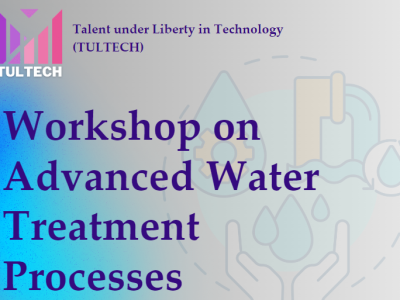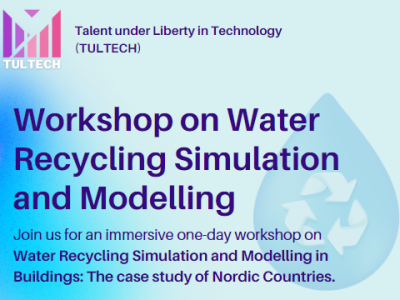Announcements
No announcements yet
New blog posts

Completion of Workshop on Water Recling Simulation and Modelling: Unlocking the Future of Water Management
19 March, 2024 by Charlotte Lee
We are thrilled to announce the successful...

IJITIS Journal Meeting and SWOT Analysis at TULTECH
15 January, 2024 by Charlotte Lee
Greetings, TULTECH community! In our...

A Milestone Meeting for EIL: Shaping the Future of Environmental Industry Letters
15 December, 2023 by Charlotte Lee
Dear TULTECH Community, We are delighted to...
Weather

-7°C
Calendar of Events
Clean, sustainable fuels made 'from thin air' and plastic waste
Posted on 25 June, 2023 by Charlotte Lee
Researchers have demonstrated how carbon dioxide can be captured from industrial processes -- or even directly from the air -- and transformed into clean, sustainable fuels using just the energy from the Sun.
The researchers, from the University of Cambridge, developed a solar-powered reactor that converts captured CO2 and plastic waste into sustainable fuels and other valuable chemical products. In tests, CO2 was converted into syngas, a key building block for sustainable liquid fuels, and plastic bottles were converted into glycolic acid, which is widely used in the cosmetics industry.
Unlike earlier tests of their solar fuels technology however, the team took CO2 from real-world sources -- such as industrial exhaust or the air itself. The researchers were able to capture and concentrate the CO2 and convert it into sustainable fuel.
Although improvements are needed before this technology can be used at an industrial scale, the results, reported in the journal Joule, represent another important step toward the production of clean fuels to power the economy, without the need for environmentally destructive oil and gas extraction.
For several years, Professor Erwin Reisner's research group, based in the Yusuf Hamied Department of Chemistry, has been developing sustainable, net-zero carbon fuels inspired by photosynthesis -- the process by which plants convert sunlight into food -- using artificial leaves. These artificial leaves convert CO2 and water into fuels using just the power of the sun.
To date, their solar-driven experiments have used pure, concentrated CO2 from a cylinder, but for the technology to be of practical use, it needs to be able to actively capture CO2 from industrial processes, or directly from the air. However, since CO2 is just one of many types of molecules in the air we breathe, making this technology selective enough to convert highly diluted CO2 is a huge technical challenge.
"We're not just interested in decarbonisation, but de-fossilisation -- we need to completely eliminate fossil fuels in order to create a truly circular economy," said Reisner. "In the medium term, this technology could help reduce carbon emissions by capturing them from industry and turning them into something useful, but ultimately, we need to cut fossil fuels out of the equation entirely and capture CO2 from the air."
The researchers took their inspiration from carbon capture and storage (CCS), where CO2 is captured and then pumped and stored underground.
"CCS is a technology that's popular with the fossil fuel industry as a way to reduce carbon emissions while continuing oil and gas exploration," said Reisner. "But if instead of carbon capture and storage, we had carbon capture and utilisation, we could make something useful from CO2 instead of burying it underground, with unknown long-term consequences, and eliminate the use of fossil fuels."
The researchers adapted their solar-driven technology so that it works with flue gas or directly from the air, converting CO2 and plastics into fuel and chemicals using only the power of the sun.
By bubbling air through the system containing an alkaline solution, the CO2 selectively gets trapped, and the other gases present in air, such as nitrogen and oxygen, harmlessly bubble out. This bubbling process allows the researchers to concentrate the CO2 from air in solution, making it easier to work with.
The integrated system contains a photocathode and an anode. The system has two compartments: on one side is captured CO2 solution that gets converted into syngas, a simple fuel. On the other plastics are converted into useful chemicals using only sunlight.
"The plastic component is an important trick to this system," said co-first author Dr Motiar Rahaman. "Capturing and using CO2 from the air makes the chemistry more difficult. But, if we add plastic waste to the system, the plastic donates electrons to the CO2. The plastic breaks down to glycolic acid, which is widely used in the cosmetics industry, and the CO2 is converted into syngas, which is a simple fuel."
"This solar-powered system takes two harmful waste products -- plastic and carbon emissions -- and converts them into something truly useful," said co-first author Dr Sayan Kar.
"Instead of storing CO2 underground, like in CCS, we can capture it from the air and make clean fuel from it," said Rahaman. "This way, we can cut out the fossil fuel industry from the process of fuel production, which can hopefully help us avoid climate destruction."
"The fact that we can effectively take CO2 from air and make something useful from it is special," said Kar. "It's satisfying to see that we can actually do it using only sunlight."
The scientists are currently working on a bench-top demonstrator device with improved efficiency and practicality to highlight the benefits of coupling direct air capture with CO2 utilisation as a path to a zero-carbon future.
Event Categories
Past Events
Workshop on Artificial Intelligence Applications in Smart Cities
20 August, 2024
Workshop on Advanced Water Treatment Processes
10 July, 2024
Workshop on Water Recycling Simulation and Modelling
15 March, 2024Today In History
Here are some interesting facts ih history happened on 19 January.
- Johann Bode founder of "Bode's Law " dies
- Battle of Golden Hill (Lower Manhattan)
- Aden conquered by East India Company
- Georgia becomes 5th state to secede from US
- 1st regular transatlantic radio broadcast between US & England
- Costa Rica Guatemala Honduras & El Salvador sign Pact of Union
- Millionaire TV program premiers





